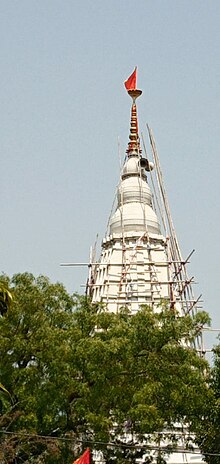Babhangawan
The village has a population of approximately 3,737 and has a primarily agricultural economy. According to the 2011 Census, the literacy rate of Babhangawan village is higher than the average literacy rate in Bihar. The total geographical area of the village is 1,465 hectares. Approximately 8,848 acres of agricultural land are cultivated, primarily for pulses and wheat. The village is divided into several tolas (small blocks) including Jaji Tola, Paschim Tola, and Dobha Par.
Climate
The climate of the village varies significantly between seasons, becoming quite hot during summers and fairly cold during the winter. January is the coldest month, with the mean minimum temperature dropping to approximately 4°C/39°F. The temperature begins to rise in March and reaches its peak in May at about 45°C/115°F. The summers have heavy rainy, with storms beginning in mid-June and continuing until mid-September. The district gets easterly winds from June to September, but from October to May the wind direction reverses. Maximum rainfall occurs during the months of July and August (289 mm).
Education
In Babhangawan there are government-run schools where village families send their children.
- M.S Babhangawan has both Lower Primary (Class I-V) and Upper Primary (Class VI-VIII) classes in a government school building with nine classrooms. Established in 1949, the school is managed by the Department of Education and is a Hindi Medium - Co-educational school. There are seven teachers (four male and three female), a library with approximately 200 books, and a playground. While the school does not provide any residential facilities, it does provide meals prepared at the school and served in a dining area.
- S.S.N. High School Babhangawan
Demographics
According to the 2011 Census of India, Babhangawan is a village with a population of 3,737, comprising 1,961 males and 1,776 females. Children aged 0-6 account for 677 individuals, representing 18.12% of the total population. The village's sex ratio is 906 females per 1,000 males, lower than the Bihar state average of 918. The child sex ratio, however, is 945, exceeding the state average of 935.
Babhangawan exhibits a higher literacy rate compared to the Bihar state average. In 2011, the literacy rate of the village was recorded at 70.46%, surpassing the state average of 61.80%. Male literacy stood at 77.00%, while female literacy was 63.17%.
The governance of Babhangawan falls under the jurisdiction of the Mukhiya of Amhara Panchayat, an elected representative who oversees the administration of the village.
Economy
In Babhangawan, out of the total population, 1,559 residents were employed. 76.14% of workers describe their work as a main occupation (employment or earning more than 6 months) while 23.86% were involved in marginal activity, providing livelihood for less than 6 months. Of 1,559 workers engaged in a main occupation, 577 were cultivators (owner or co-owner) while 555 were agricultural labourers.
The village has a branch of the Punjab National Bank for day to day financial operations.

Shree Shesh Nag Temple
Shree Shesh Nag Temple is a famous temple and it is situated on the Banks of Haruhar River in the north & in the west from Babhangama village. There are daily worship services in the morning and evening, which are organized by Babhangama residents with Vedic Mantra and other slokas. Every year, Shree Shesh Nag hosts a special service for Nag Panchami day. From every house, prasad are collected at the temple. Residents pray to Nag Baba for a prosperous and peaceful life for the people of this village as well as others. During this period, the Nag and Nagin Devtas come and drink the milk prasad which have been offered to them. On this occasion, a big fair (Mela) is gathered to see this festival from this village & neighboring villages. On 7 May 2019, a vase or kalasha (also spelled kalash or kalasa; Sanskrit: कलश) was added to the top of the main temple.
References
- ^ "Villages & Towns in Lakhisarai Block of Lakhisarai, Bihar". Archived from the original on 7 August 2016. Retrieved 15 June 2016.
- ^ "Villages & Towns in Lakhisarai Block of Lakhisarai, Bihar". Archived from the original on 7 August 2016. Retrieved 15 June 2016.
- ^ "Babhangawan Population - Saran, Bihar". Census 2011. 2011.
- ^ "Villages & Towns in Lakhisarai Block of Lakhisarai, Bihar". Archived from the original on 7 August 2016. Retrieved 15 June 2016.
- ^ "Babhanganwan Village in Lakhisarai (Lakhisarai) Bihar | villageinfo.in". Archived from the original on 25 June 2016. Retrieved 15 June 2016.
- ^ "Welcome To District Lakhisarai,(Bihar) Website". lakhisarai.bih.nic.in. Archived from the original on 29 August 2011. Retrieved 15 June 2016.
- ^ "M.s Babhangawan - School in Bhangawan, Lakhisarai". Archived from the original on 6 August 2016. Retrieved 15 June 2016.
- ^ "M.s Babhangawan - School in Bhangawan, Lakhisarai". Archived from the original on 6 August 2016. Retrieved 15 June 2016.
- ^ "Babhanganwan Village Population - Lakhisarai - Lakhisarai, Bihar". Archived from the original on 7 August 2016. Retrieved 15 June 2016.